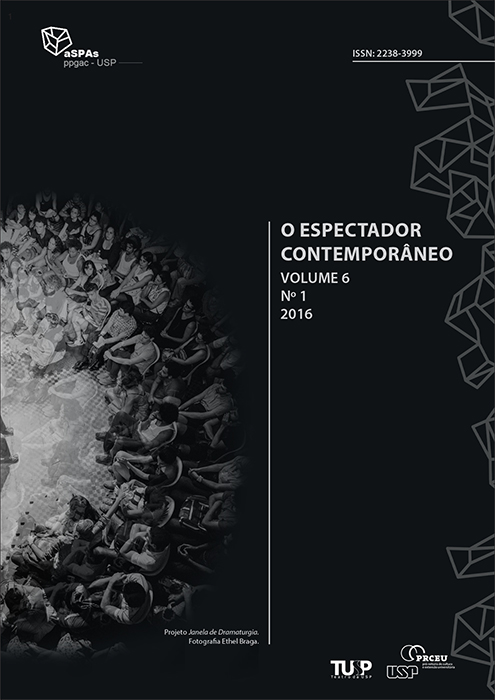To our enemies. Reflections on audience
DOI:
https://doi.org/10.11606/issn.2238-3999.v6i1p7-42Keywords:
Audience, Performance, Social revolution, Esthetic, Device.Abstract
The aim of this article is to study the constitution of the audience, understood as an interlocutor in action, based on two different stories. The first one is an improvised dialogue by the artistic duet Los Torreznos, in La caverna (2012), in which the audience was their object of observation; the other one is extracted from the analysis made by the Comité Invisible about the occupation movement in squares all over the world since 2008. The objective is to confront two different approaches of audience – scenic and esthetic, on one hand, and social and political, on the other – and trace an inward and outward journey between scene and street, considering both spaces as mechanisms of action and representation, operating differently before the political and economic order, reinforced since 1990.Downloads
References
COMITÉ INVISIBLE. A nuestros amigos. Trad. Vicente E. Barbarroja, León Barrera y Ricardo I. Fiori. Logroño, España: Pepitas de calabaza y Surplus, 2015.
FERNÁNDEZ-SAVATER, A. La piel y el teatro. Salir de la política. El diario.es, 16 oct. 2015. Disponible en: <http://www.eldiario.es/interferencias/piel-teatro-Salir-politica_6_442065819.html>. Consultado el: 23 abr. 2016.
Downloads
Published
Issue
Section
License
Copyright (c) 2016 aSPAs Journal

This work is licensed under a Creative Commons Attribution 4.0 International License.
Whenever publishing material referring to the article published in the aSPAs Journal, the authors commits to mentioning such publication as follows:
“This article was originally published by aSPAs Journal volume (insert the volume), number (insert the number) in the year (insert the year) and can be accessed in: http://revistas.usp.br/aspas"







